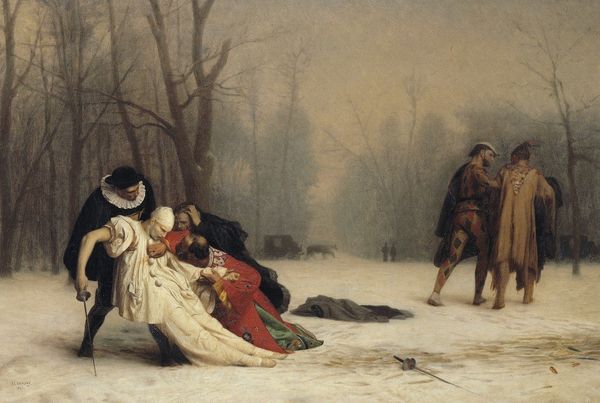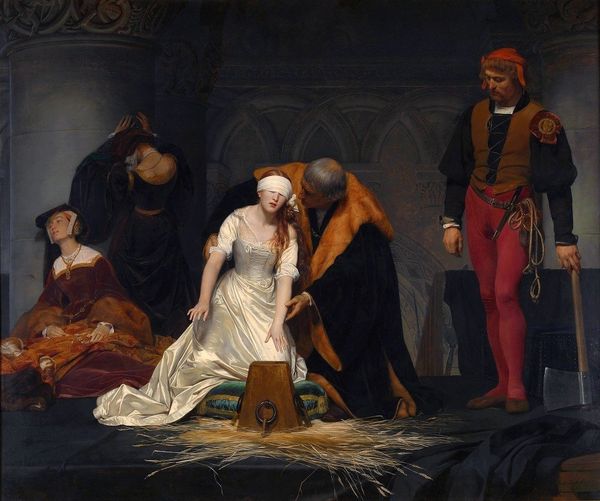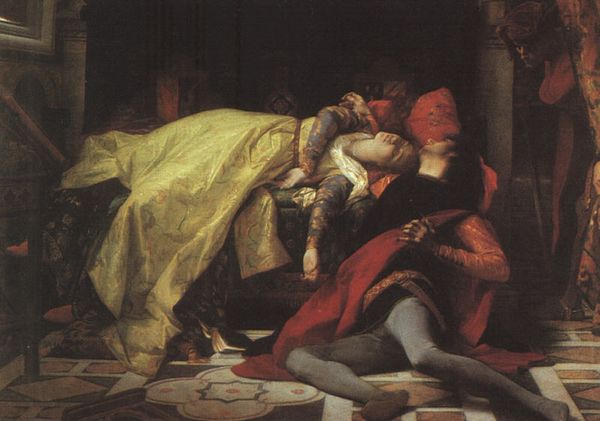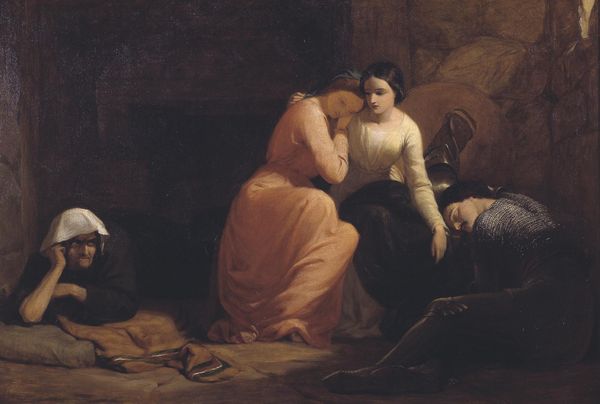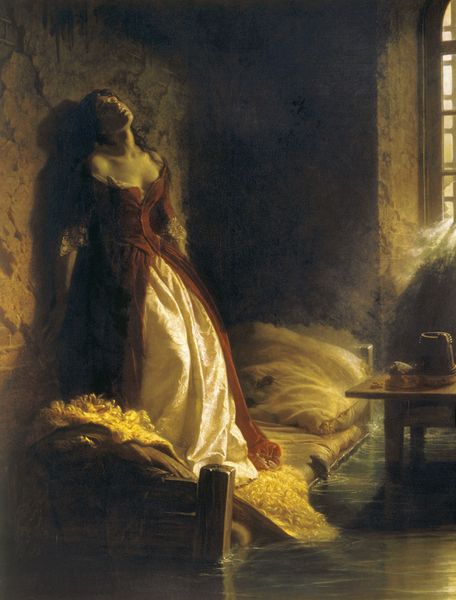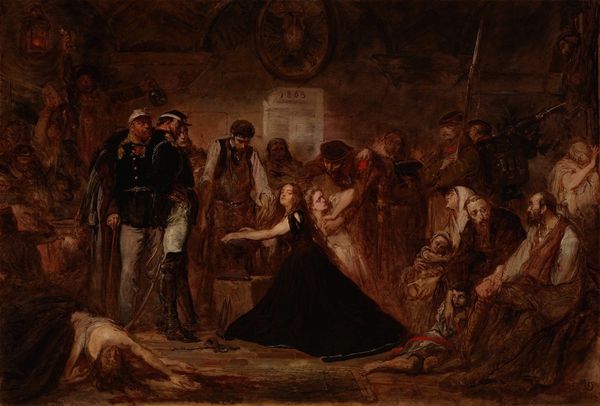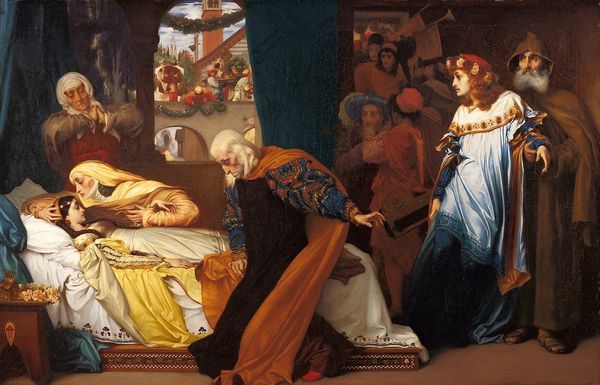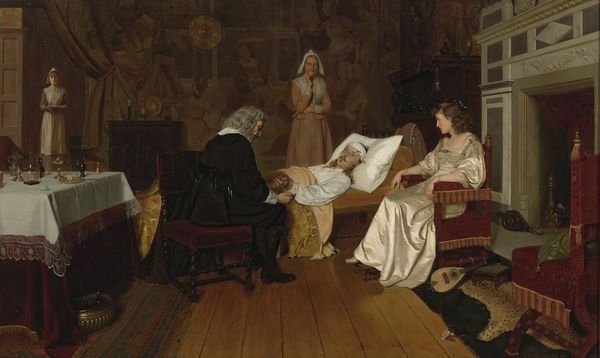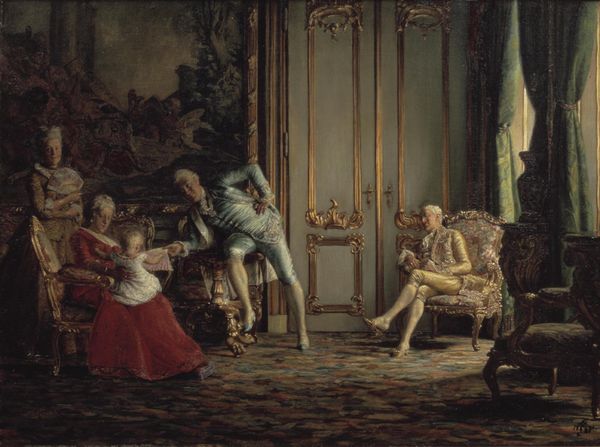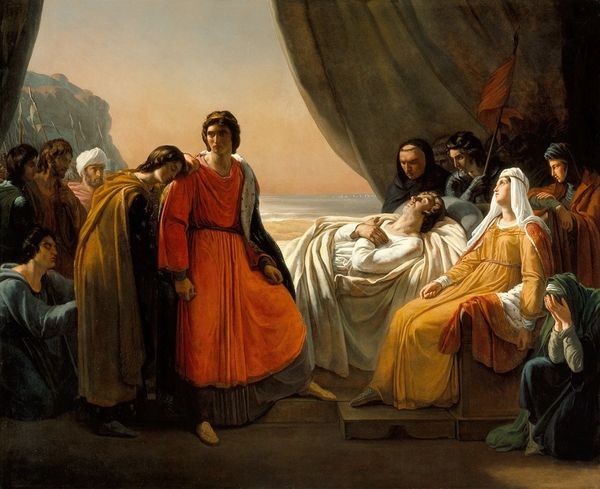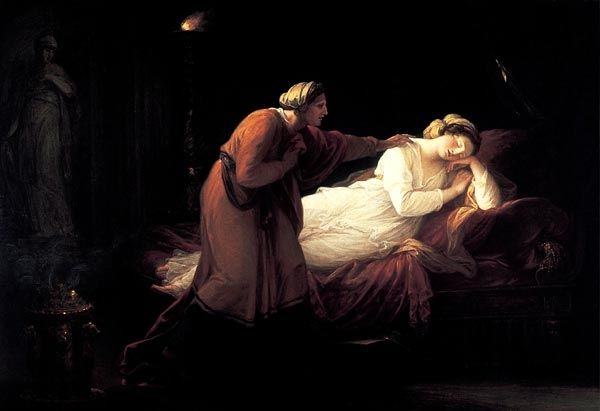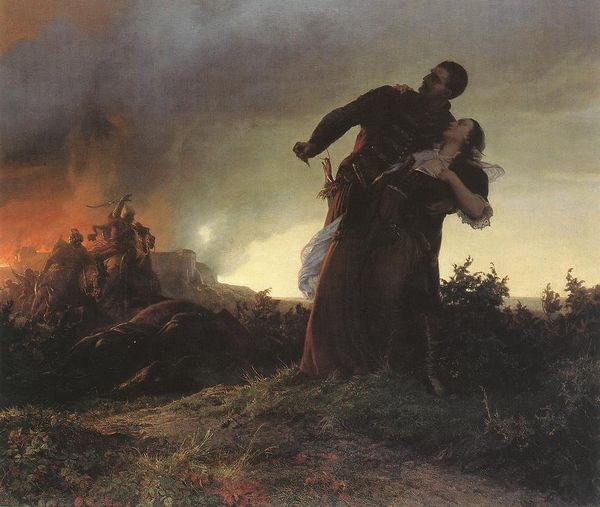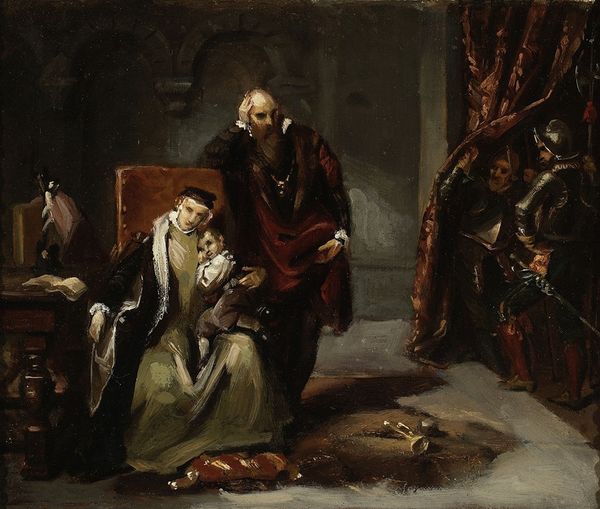
The Duel After the Masquerade 1859
0:00
0:00
jeanleongerome
Hermitage Museum, Saint Petersburg, Russia, Musée Condé, Chantilly, France
Dimensions: 68 x 99 cm
Copyright: Public domain
Ever left a party with a few regrets? This oil painting, ‘The Duel After the Masquerade’ (1857), doesn’t quite align with your typical night out… hopefully! Here, the French painter and sculptor Jean-Léon Gérôme (1824-1904) imagines the tragic after-effects of a masquerade (costume ball) which culminated in a deadly duel. Take a close look at this chilling scene. You can almost imagine the music and chatter of the party still ringing in your ears, having been quickly replaced by a hushed silence. It’s early dawn on a frosty winter morning. The sheet of snow on the ground creates a cold tone that is stark and sombre. ️ Towards the left side of the canvas, we see a man wearing a Pierrot (traditional pantomime clown) costume. His white outfit is smeared with blood as he collapses into another man’s arms. In front of the injured Pierrot, a third man dressed as the Doge of Venice inspects the wound. His costume is bright scarlet – a colour associated with danger and violence. The vivid red tones of the Doge costume are striking against the overwhelming gloom of the background. ❄️ On the right side of the canvas, two men (dressed as an indigenous American and a Harlequin respectively) turn their backs on the scene. These are the champions of the dual. Yet there is no sense of victory or celebration. Jean-Léon Gérôme made many fascinating decisions during the creation of this painting. Why did he choose to depict the aftermath of the violence, rather than the duel itself? And why would he paint the men in costume? Their extravagant attire gives the scene a sense of absurdity, perhaps highlighting the foolish and irrational actions of the duellers. Upon its display in the 1857 Paris Salon, ‘The Duel After the Masquerade’ generated intense speculation and gossip. Critics and the public alike were gripped – what inspired the painting? Could it possibly be based on real events?
Comments
No comments
Be the first to comment and join the conversation on the ultimate creative platform.
